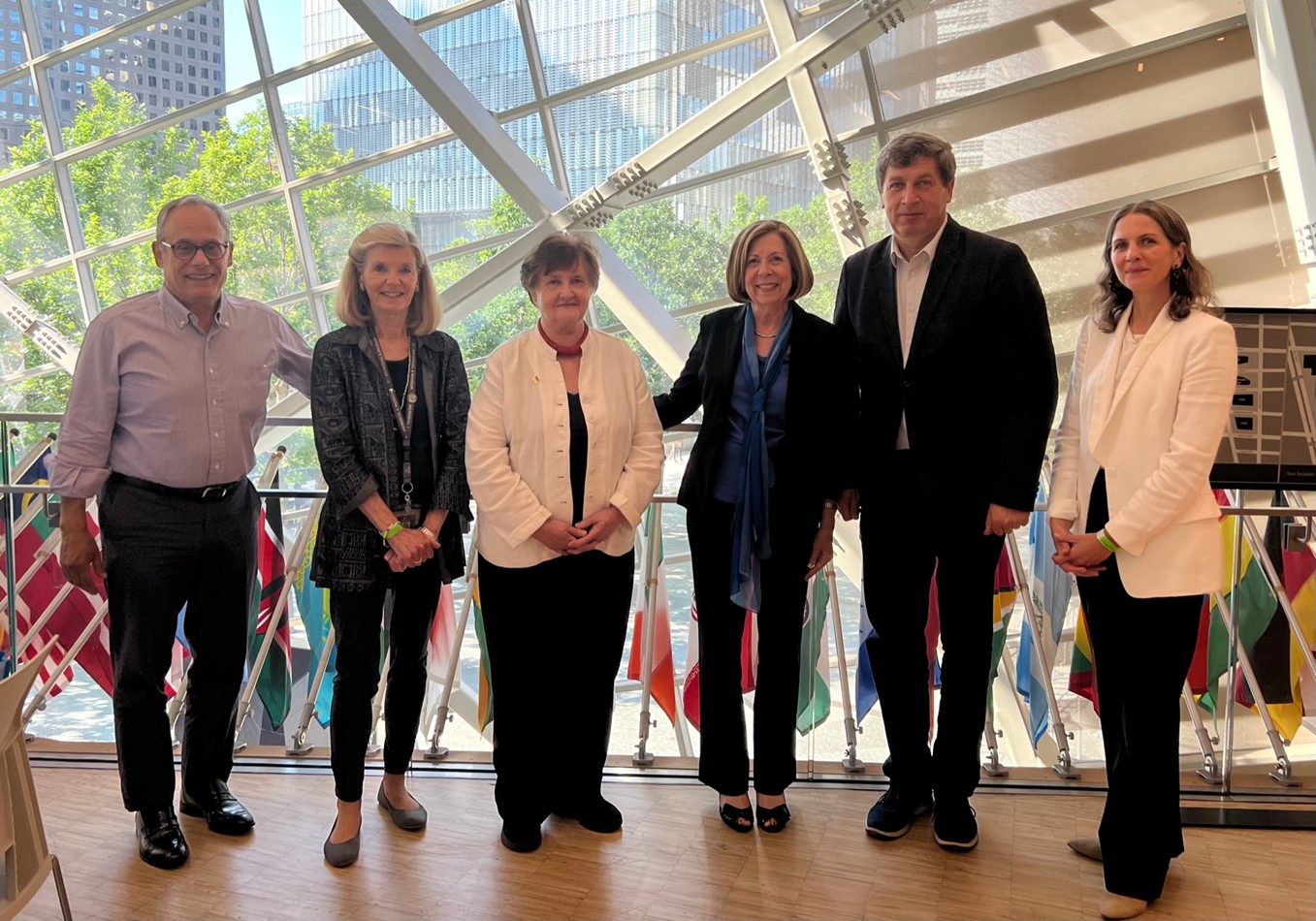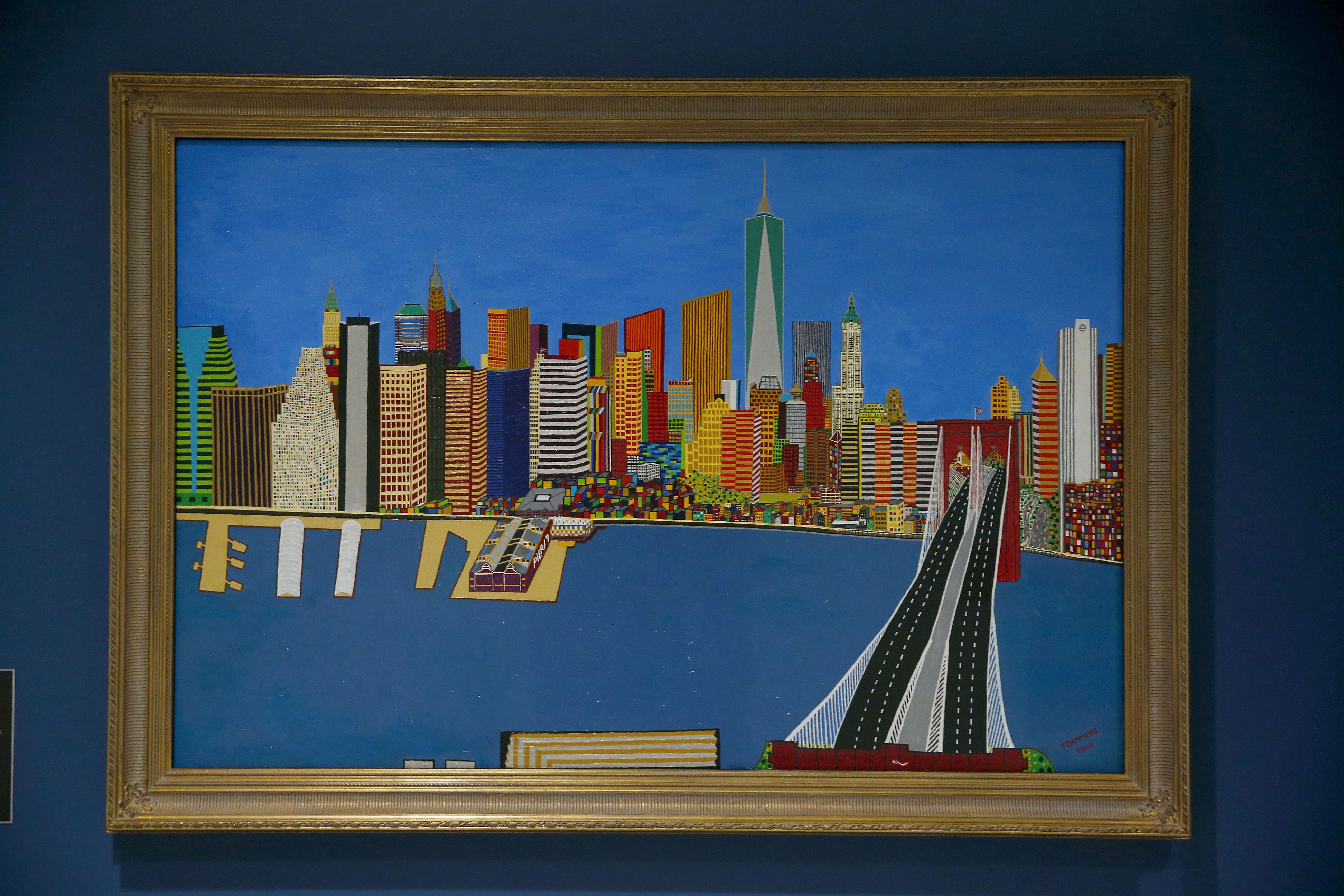New York to Norway: Remembrance and Rebuilding After Tragedy
New York to Norway: Remembrance and Rebuilding After Tragedy
- June 21, 2022
Left: The main house on the island, visible from the ferry dock. Right: An education space in the lower level of the Hegnhuset.
On July 22, 2011, a terrorist detonated a truck bomb in central Oslo, Norway, killing eight people. He then drove 45 minutes toward the docks where ferries shuttled back and forth from the small island of Utøya, which housed a summer camp for the youth movement of Norway’s liberal Labor party. Dressed in police gear and brandishing a police badge, he told the ferry captain that he had been sent to make sure the island was safe. Once on the island, the terrorist began a murderous rampage that killed 69 more people, mostly teenagers.
As Norway grappled with the aftermath of this horrific attack, talks emerged of ways to memorialize the 77 victims killed that day. Never before had the country—with a total population of around 5 million—experienced mass murder on that scale. Its populace struggled to make sense of this unprecedented violence, and the Herculean task of honoring the victims was fraught with raw emotion and complex sensitivities. The biggest challenge was balancing the need to commemorate the victims with the desire to rebuild and reclaim the island for the future. One of the people responsible for the design of the memorial was Tor Einar Fagerland, a historian at the Norwegian University of Science and Technology. Seeking advice from others with similar experiences, he reached out to Alice Greenwald, President & CEO of the 9/11 Memorial & Museum.

Alice Greenwald and Clifford Chanin during a panel on extremism this May in Norway.
“A number of families of these teenagers wanted what was left of the structures on the island to be as they were when their children died because that was the last connection they would have to their kids physically,” explained Greenwald. “On the other hand, there was a desire to take the island back and rebuild. These felt like irreconcilable expectations. And that is something that certainly we understood intimately from the experience of creating our own project here in New York City.”
“I think that's really the key challenge,” said Clifford Chanin, Executive Vice President and Deputy Director of Museum Programs here. “How do you take people who have been so suddenly and grievously damaged by this terrible loss and put them into a process where they can hear each other? Or they can turn to professional outsiders and, over time, trust that we have something to add to this.”
Greenwald and Chanin both traveled to Norway in 2014 to be part of the discussions around the design of a proposed memorial on Utøya island. By then, the cafeteria building on Utøya—where 13 of the murders took place—had already become an unofficial shrine to the victims, with families leaving flowers, pictures, and other tributes. The group brought on architect Erlend Blakstad Haffner who came up with the plan to incorporate the cafeteria shrine into the memorial design.
The final result was called the “Hegnhuset,” meaning “protected house” or “house that is embraced.” Surrounding the preserved shrine in the cafeteria building are 69 columns, one to commemorate each of the victims. These are enclosed or “protected” by 495 wooden slats, representing the number of people who survived the attack. The design embraces life and death, survival and loss, paying tribute to those who were killed and acknowledging the survivors’ trauma and indelible memories, as well as their strength and resilience.
Around the memorial are new buildings and facilities that were rebuilt. This space functions year-round as a learning center, welcoming people from around the world to gather and discuss contemporary issues in the fight against violent extremism.
There is also a clearing in the woods overlooking the fjord with a suspended circular metal sculpture engraved with the names of each victim. There are stone seats around the circle, inviting people to reflect and remember.
Greenwald and Chanin returned to Norway this spring to visit the memorial sites again. They attended workshops on the role memorials can play in preventing extremism and spoke on a panel with fellow historians of memorialization James E. Young and Edward Linenthal about learning from other memorial projects around the world.
“I'm so moved by the fact that, first of all, they invited us to be a part of this conversation,” said Chanin. “But they recognized even before we did that the expertise we gained from having worked on the 9/11 Memorial was very applicable to what they were dealing with, and that they could benefit from our hard-earned experience.”
“And I think that's what they have benefited from; they've been looking to us to say that what they're going through is not unique,” said Greenwald. “There are models for what they’ve been trying to achieve that have been successful. Consider lower Manhattan and how we were able to accommodate both commemoration and rebuilding. Side by side, they integrate, and both contribute to renewal.”
By 9/11 Memorial Staff
Previous Post
From War-Torn Ukraine to 9/11 New York

Yurii Savchuk, director of Kyiv's National Museum of the History of Ukraine in the Second World War, built a remarkable "living" exhibit about the war in his country - in just a month. Earlier this week, we welcomed him and Maria Shust, director of the Ukrainian Museum in NYC, for a special visit.
Next Post
Resilience and Remembrance in Newly Displayed Paintings

Works by the Dutch artist Frank Dammers and the American artist Derek Fordjour are newly on view in our Education Center gallery, each infused with definitive post-9/11 themes and its own backstory.

